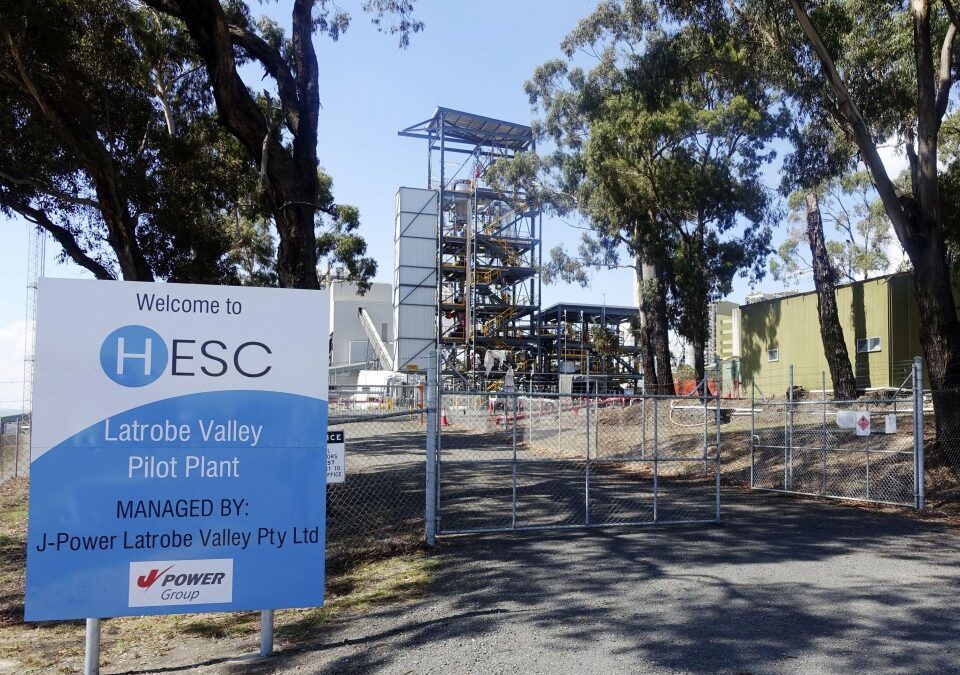The Hydrogen Energy Supply Chain (HESC) project makes no sense.
A consortium of Japanese companies and AGL want to make hydrogen from brown coal or blend it with biomass in the Latrobe Valley and ship it to Japan. The pilot stage has been completed, but the community has yet to see the results.
Brown coal gasification is not only the most climate-polluting way of producing hydrogen, but the project is also diverting the efforts of engineers and crucial investment away from real renewable solutions and sustainable, future-proof industry.
Closing Victoria’s highly polluting brown coal power stations should mean the end of coal emissions, harmful air pollution and toxic coal ash waste. However, in a desperate attempt to keep profiting from brown coal, HESC threatens our air, waterways and climate.
Labelling hydrogen produced from brown coal or biomass as ‘clean energy’ is greenwashing. No other project in the world is pairing hydrogen from coal with CCS and trying to get away with call it ‘clean energy’.
The company J-Power, part of the Japanese consortium developing the HESC coal-to-hydrogen project, stated in a Latrobe Valley Express article (19 Sep 2023) that “biomass would come from plantation waste or special plantation forests”. This feed source would compete with other Gippsland land uses and further deplete our declining water resources.
Taxpayers saddled with climate pollution
HESC plans to use the CarbonNet Carbon Capture and Storage (CCS) project to store CO2 in the Bass Strait. The Victorian Government manages the CarbonNet project, and such an arrangement would expose Victorian taxpayers to bearing the burdens and risks of supporting these off-shore energy companies.
As Minister for Energy and Climate Action Lily D’Ambrosio said, “The money now put on the table by the commercial proponents explicitly won’t go to capturing the project’s carbon or storing it, 100% of that risk … sits with Victorians.”
The record of CCS projects in Australia and globally is a near-total failure.
CarbonNet’s pipeline will travel 100km over Gunaikurnai and Bunurong Country. Leaking carbon dioxide from CO2 pipelines comes with risks of intoxication, disorientation, and asphyxiation to humans and other biological life forms. Because CO2 vapour is heavier than air, it can blanket the ground and displace oxygen when released.
Horrifying reports from the rural town of Santartia in Mississippi, USA, record a mass poisoning from a carbon dioxide pipeline rupture. More than 200 people evacuated, and at least 45 people were hospitalised. “Cars stopped working, hobbling emergency response. People lay on the ground, shaking and unable to breathe. First responders didn’t know what was going on.” (NPR, 2023)
Proponents of HESC rely on a misleading comparison between the best-case theoretical emissions scenario for hydrogen from brown coal gasification and CCS with hydrogen produced from fossil gas without CCS.
Compared to the equivalent production of renewable hydrogen, which is a zero-emissions production process for hydrogen, the HESC project will create between 2.9 and 3.8 million tonnes of CO2 emissions, the equivalent of adding 550,000 – 735,000 petrol cars to the road. The claim of emissions reduction relies on plans to capture and bury 90% of these emissions using CCS, despite the history of CCS project failures and the fact that no other project in the world is pairing hydrogen produced from coal with CCS and trying to call it clean energy.

